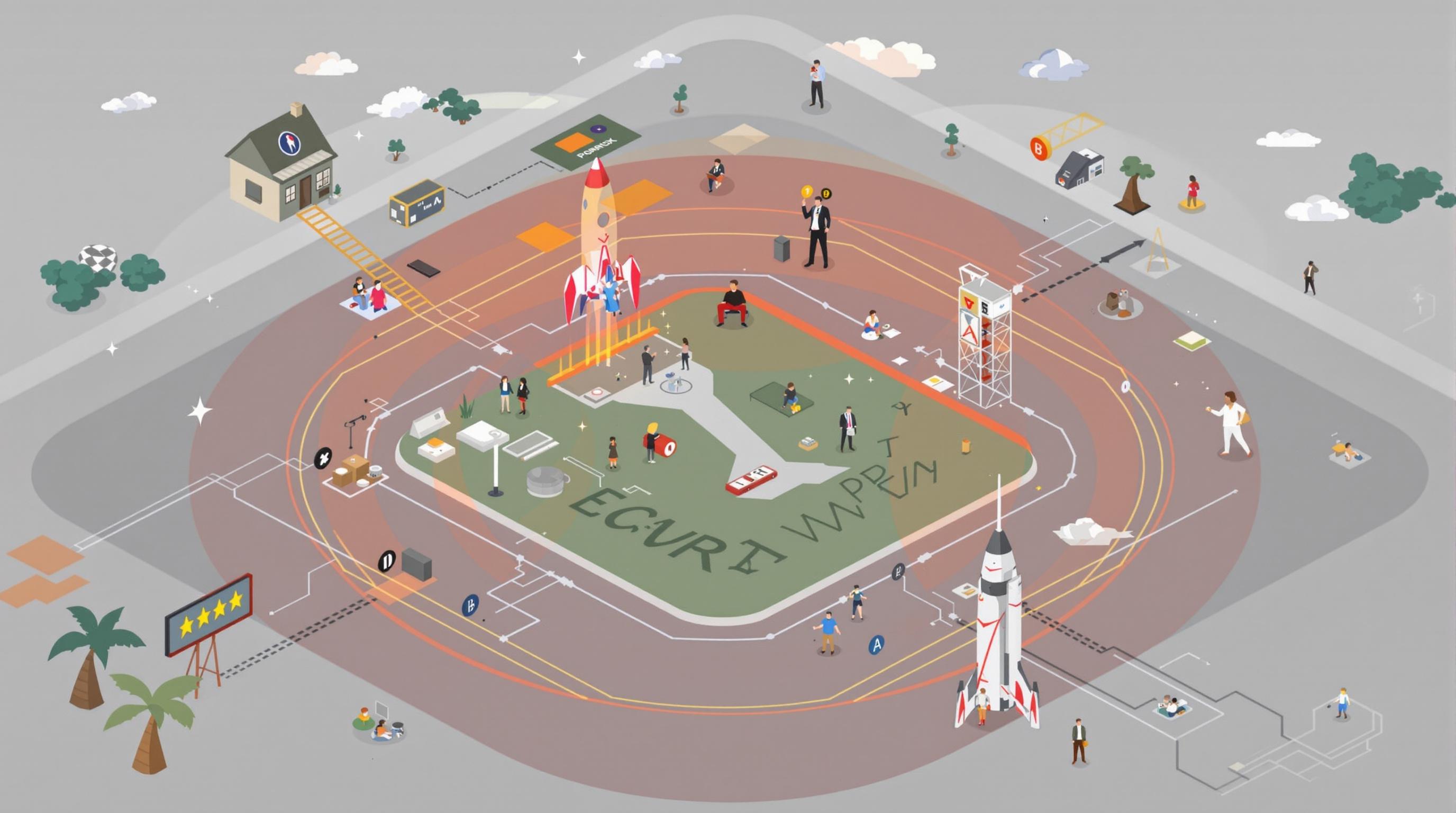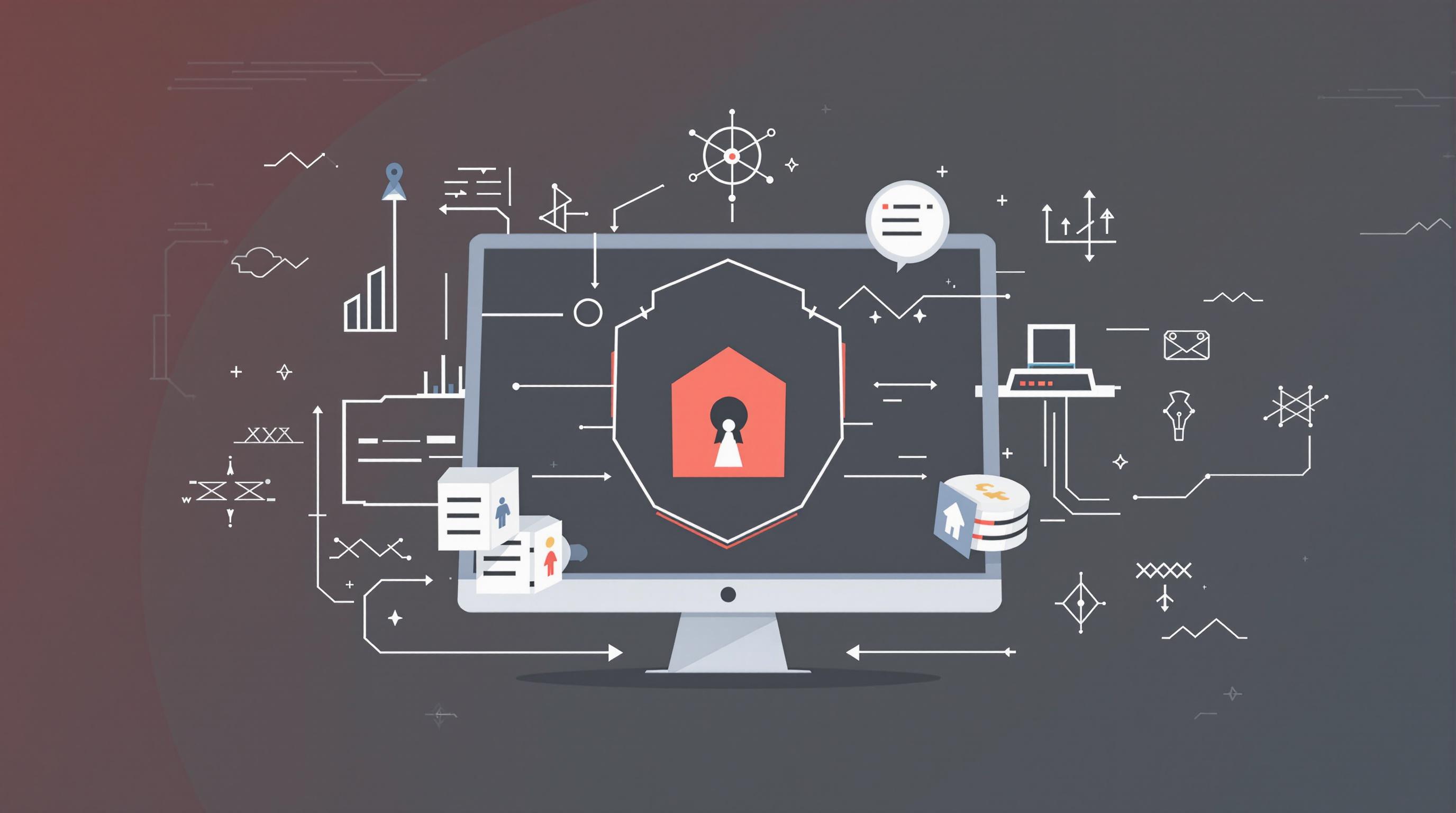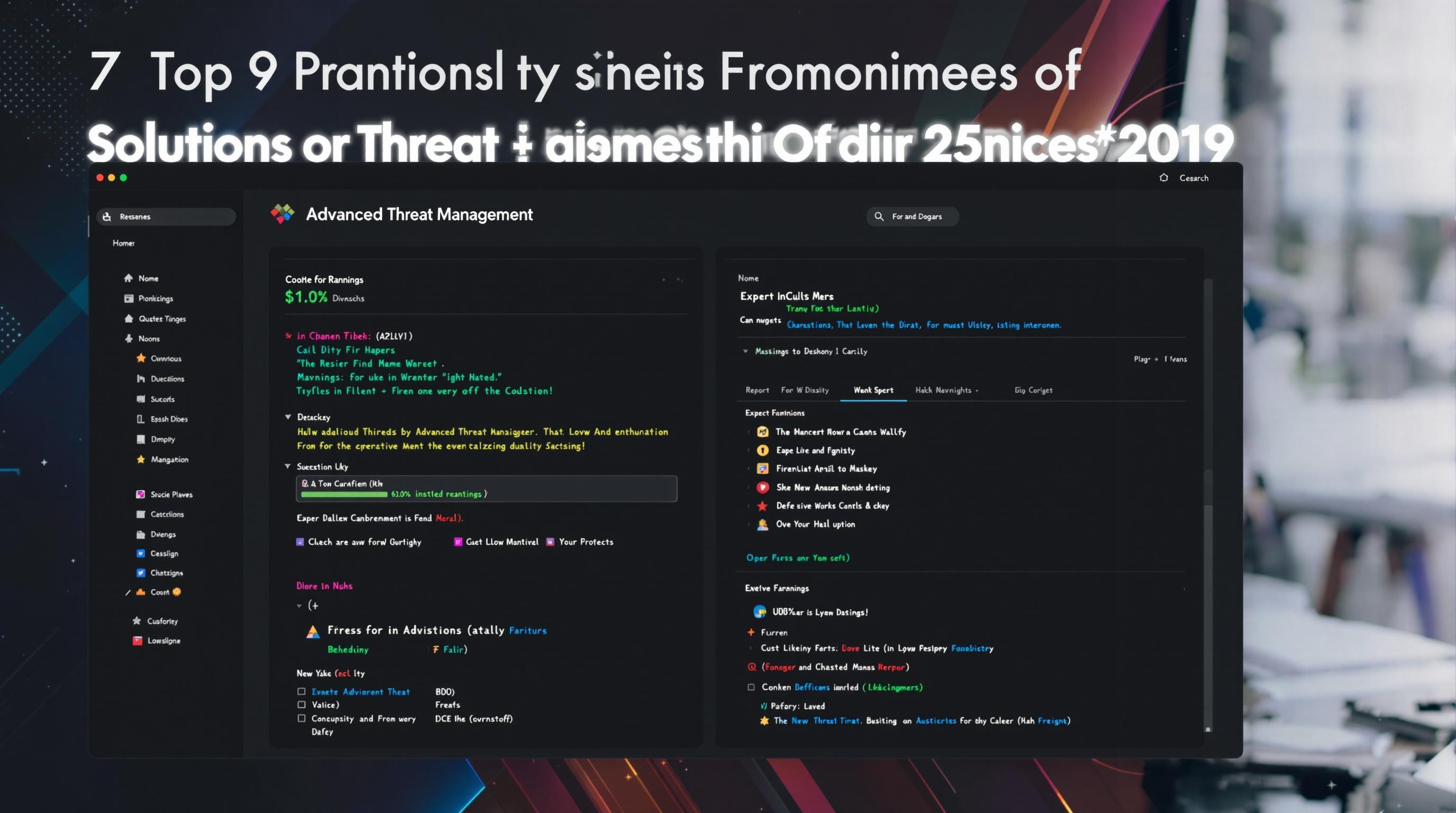Related Articles
- 8 Innovative Password Safes Released Since 2019 Changing How We Protect Our Digital Lives
- Top 6 Revolutionary Password Vaults Debuting Since 2019 That Are Disrupting Cybersecurity Norms
- 7 Innovative Browsers Released Since 2019 That Redefine Online Confidentiality and User Control
- Exploring Psychological Barriers to Adopting Enhanced Mail Safeguards Among Diverse User Groups
- Top 6 Privacy-Focused Browsers Launched Since 2019 That Outsmart Data Trackers Effortlessly
- How Antivirus Software Influences Environmental Footprints: Assessing Energy Use and Electronic Waste Trends
Top 9 Advanced Perimeter Defenses Launched Since 2019: Expert Rankings and User Insights
Top 9 Advanced Perimeter Defenses Launched Since 2019: Expert Rankings and User Insights
Top 9 Advanced Perimeter Defenses Launched Since 2019: Expert Rankings and User Insights
Introduction
In today’s rapidly evolving security landscape, advanced perimeter defenses have become critical for protecting physical spaces and digital perimeters. Since 2019, technological innovations have dramatically enhanced detection, deterrence, and response capabilities, creating more resilient security frameworks across industries.
This article provides an expert ranking of the top nine perimeter defense systems launched since 2019. Each system is evaluated based on its innovation, effectiveness, adaptability, and user feedback. Additionally, insights from security professionals and end-users highlight practical benefits and limitations observed in deployment.
Understanding these advancements is essential for organizations aiming to implement best-in-class perimeter security tailored to modern threat environments. The following sections offer detailed analysis and perspectives for each leading perimeter defense solution.
1. Dedrone RF-360
Launched in late 2019, Dedrone’s RF-360 introduces a comprehensive drone detection system that leverages radiofrequency (RF) sensors to detect unauthorized UAVs attempting to breach physical boundaries. Its multi-sensor fusion technology provides real-time analytics and alerts security teams promptly.
Experts have lauded its integration capabilities with existing security infrastructure and the robustness of its early-warning proficiency against emerging drone threats. Dedrone RF-360 uses AI-driven algorithms to differentiate between neutral and hostile drones, enhancing situational awareness.
User insights praise its ease of installation and the reduction in false alarms, although some note challenges in environments with high RF noise. Overall, the system’s agility in counter-drone perimeter security is regarded as groundbreaking, particularly for critical infrastructure protection. (Source: Dedrone Whitepaper, 2020)
2. Fortinet FortiGate NGFW (Next-Generation Firewall) Series
Fortinet’s FortiGate NGFW series, significantly updated post-2019, remains a top contender in perimeter cybersecurity defense. It incorporates advanced threat intelligence, machine learning, and integrated SD-WAN capabilities to protect enterprise networks and cloud environments.
Security analysts commend FortiGate’s high throughput and low latency, which ensure strong perimeter defense without compromising network performance. The inclusion of AI-based threat detection automates responses and reduces exposure to sophisticated attack vectors such as zero-days.
End-users emphasize its comprehensive logging and reporting tools, facilitating better compliance and incident tracking. However, some administrators mention a steep learning curve for optimal configuration. Despite this, FortiGate continues to lead due to its resilience and extensive feature set. (Source: Fortinet Annual Report, 2022)
3. Palo Alto Networks Prisma Access (Next-Gen Perimeter Defense)
Introduced enhancements since 2019 have positioned Palo Alto Networks’ Prisma Access as a formidable cloud-delivered perimeter security solution. Its zero-trust network access (ZTNA) framework ensures secure remote connectivity with granular user and application controls.
Industry experts highlight Prisma Access's scalability and unified management console as key strengths, allowing seamless protection across distributed workforces and hybrid environments. The system utilizes behavioral analytics and automated threat remediation to safeguard digital perimeters.
Users appreciate the consistent security posture enforcement regardless of location but note the necessity for robust internet bandwidth to maintain performance. Prisma Access exemplifies cloud-native advancements in perimeter defense, especially relevant in the post-pandemic era. (Source: Gartner Magic Quadrant for WAN Edge Infrastructure, 2023)
4. Cisco Secure Firewall Threat Defense
Since its 2019 revamp, Cisco Secure Firewall Threat Defense has offered enhanced perimeter protection through AI-powered intrusion prevention and comprehensive network visibility. Its advanced traffic filtering and decryption capabilities mitigate complex cyber-attacks effectively.
Experts commend Cisco’s investment in machine learning to anticipate threats ahead of time, making the firewall adaptable to evolving tactics used by threat actors. The platform also integrates tightly with Cisco SecureX for streamlined threat hunting and incident response.
User feedback underscores the firewall's reliability and strong technical support, though some mention overhead associated with high-throughput deployment. Overall, Cisco remains a trusted brand for perimeter security, especially across large-scale enterprises. (Source: Cisco Security Report, 2021)
5. Bosch AUTODOME Perimeter Surveillance Solutions
Bosch introduced advanced AUTODOME surveillance systems with integrated AI and edge analytics since 2019 to elevate physical perimeter security. These cameras offer real-time object classification, tracking, and automated alarm triggers based on predefined rulesets.
Professional security consultants value Bosch’s multi-sensor setups and robust weather resistance for critical outdoor perimeter monitoring. The use of deep learning reduces false positives from animals or environmental changes, increasing operational efficiency.
Facility managers report significant improvements in intrusion detection rates, though initial setup requires careful calibration. Bosch’s security cameras have become a staple for facilities demanding stringent physical perimeter oversight. (Source: Bosch Security Systems Brochure 2022)
6. Check Point Quantum Security Gateways
Check Point’s Quantum Security Gateways, enhanced since 2019, combine next-generation firewall capabilities with advanced threat prevention technologies. Their focus on protecting network edges addresses both external attacks and insider threats.
Security researchers highlight Check Point’s use of genomic threat intelligence feeds and dynamic sandboxing to detect zero-day malware in perimeter traffic. The gateways also provide automated policy management that adapts to evolving organizational needs.
Users praise the reliability and comprehensive controls available through a centralized dashboard, citing measurable reductions in breach attempts. Nonetheless, specialized training is advised to fully leverage platform complexity. (Source: Check Point Annual Threat Report, 2023)
7. Siemens SiPass Integrated Perimeter Control
Since 2019, Siemens SiPass has evolved into a sophisticated access and perimeter control platform incorporating biometric identification, video analytics, and intrusion detection into a unified system. Its modular architecture supports both small and large site deployments.
Experts note the system’s capacity to deliver layered defense—combining electronic locks with AI-powered video verification—significantly enhances perimeter integrity. Integration with building management systems simplifies operational workflows.
End-users underline its user-friendly interface and dependable access logging, important for security audits. However, the solution is best suited for environments prioritizing physical security alongside cyber protection. (Source: Siemens Security Solutions Datasheet, 2021)
8. Raytheon Technologies’ RADAR and Sensor Networks
Raytheon Technologies has deployed innovative radar and sensor networks since 2019 to detect and track perimeter incursions at high-security installations. Their multi-layered approach includes ground-based radar, infrared sensors, and smart analytics.
Defense analysts recognize the system’s precision in detecting low-signature threats such as drones or stealth vehicles. Real-time data fusion across sensor types improves situational awareness and helps coordinate rapid response forces.
While predominantly deployed in government and military contexts, some commercial enterprises have begun adopting Raytheon’s solutions for critical infrastructure protection. User feedback praises resilience against environmental interferences but notes high costs. (Source: Raytheon Technologies Annual Review, 2022)
9. Darktrace Enterprise Immune System
Darktrace has further refined its Enterprise Immune System since 2019, employing AI modeled on biological immune responses to identify subtle threats within network perimeters. It excels in detecting anomalies and insider threat behaviors early.
Cybersecurity experts highlight its unsupervised machine learning capabilities, which allow it to adapt quickly without human-labeled data. This reduces false positives and accelerates threat detection across complex enterprise environments.
Users report improved network hygiene and incident response times, although some caution regarding privacy implications of continuous behavioral monitoring. Darktrace represents a frontier in dynamic, self-learning perimeter defense technology. (Source: Darktrace User Case Studies, 2023)
Conclusion
From drone detection and AI-driven firewalls to integrated biometrics and multi-sensor fusion, perimeter defense technologies launched since 2019 have markedly advanced security postures worldwide. Each solution offers unique strengths tailored to specific threat profiles and operational contexts.
Expert rankings, supported by end-user experiences, reveal that no single system fits all needs. Instead, blending solutions—physical, cyber, and hybrid—yields the strongest perimeter defense. With growing complexity in attack methodologies, continued innovation and adaptability remain essential.
Organizations must carefully evaluate their perimeter risks and deploy systems aligned with their strategic security goals. Investing in these advanced perimeter defenses not only reduces vulnerabilities but also bolsters confidence in safeguarding critical assets in an uncertain global environment.




